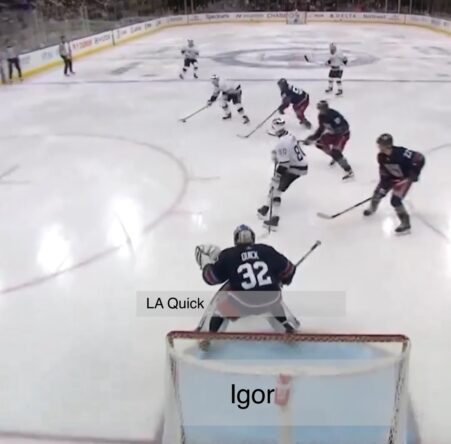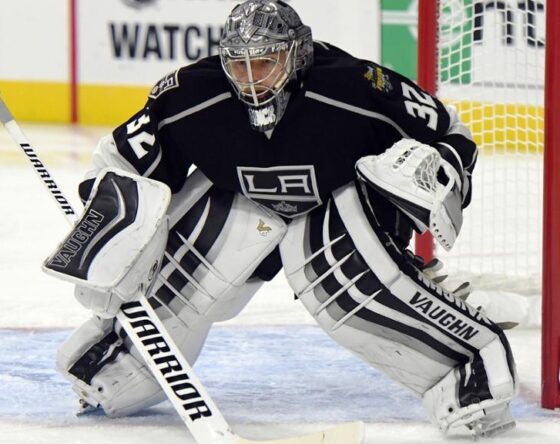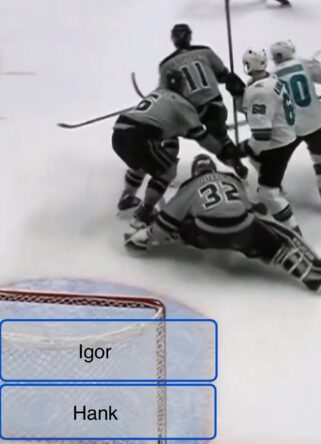
I have to admit. When Chris Drury signed Jonathan Quick this summer, I was a bit miffed. Not because Quick hadn’t strung together strong seasons in a few years, or his age (37), but because he simply just didn’t fit the type of goaltender that Benoit Allaire usually prefers to work with. Over the past 15+ years, most Rangers backup goaltenders fit a certain profile in terms of how they approach the position.
When it comes to that approach, there’s usually a few different schools of thought. On one end of the spectrum, you have goalies like Marc-André Fleury, Sergei Bobrovsky, or even Petr Mrázek, who play more aggressively. They typically position themselves outside of the blue paint and because of that, often have to make desperation saves to get back to their posts (e.g., paddle saves, diving glove saves, etc.).
The second camp of goalies typically reflect the Francois Allaire (not Benoit Allaire) school of thought. Guys like Connor Hellebuyck, Jake Oettinger, or even Roberto Luongo in his day mostly stayed in the upper 3rd of the crease, will typically drop to their knees on saves, and try to take every puck to their mid-section.
Finally, you have the Benoit Allaire approach. Whether its been Hank, Igor, Georgiev, Raanta, Talbot, etc., they all played more conservatively by staying deeper in their crease, not necesarily dropping to their knees on every shot (because they play so deep), and all have high-end technical ability.
Jonathan Quick throughout his career has been an extreme version of approach #1…so about as far away as Benoit’s preference as one can get.
You would figure that most coaches wouldn’t be messing with a 3x Stanley Cup Champion’s approach to their position. And yet, Benoit has been able to do so. Let’s a take a look at what adjustments have been made to Quick’s game this season.
Crease Depth
In the above picture, the puck is up at the point. In this scenario, Lundqvist would have typically been in the lower 3rd of the net. Igor would be around mid-crease, trying to see over everyone. Quick on the other hand, is probably 2-3 feet outside of the crease and is looking between players’ legs.

Fast forward to Quick on the Rangers, and what do we have? While he’s positioned more aggressively than where Igor would be, he’s still not out where he would have been as a King. By moving Quick back a few feet into the blue paint, it gives him a better chance to fight off rebounds or get in position for a lateral pass.
Stance / Crouch

If you look at the above picture of Igor, you will notice that his chest is pretty much perpendicular to the ice. The philosophy with this type of crouch is that 1) it helps goalies be more patient and letting the play develop, and 2) you take up more net.

Now compare Igor to Quick in LA. Very different. His chest is over his knees. He looks like he is ready to explode on the play and possibly overcommit.

Quick on the Rangers looks a bit closer to Igor. His stance is still fairly wide, but his crouch isn’t as pronounced (i.e., his chest is up). This is the Benoit Allaire effect.
Movements
When you put it altogether, how you position yourself, what your stance is, and how your crouch is all factors in to how you move around your crease. While Quick will still be more advertureous than Igor (who is just a hovercraft around his net), I’d argue that Benoit has reigned Quick in a bit.
Case in point, check out this video out of Quick making saves with the Kings. Dude is all over the place.
Now watch this sequence while with the Rangers. There’s just a bit more body control due to the factors mentioned above.
Final word on the Benoit Allaire effect
Whether or not Quick remains in the upper echelon of the league in goalie stats remains to be seen. However, you have to give credit where credit is due. Benoit Allaire continues to get the most out of his goalies and clearly Quick has been open to adapting his game at this stage of his career. Silk ties for all involved.
More About:Goaltending

